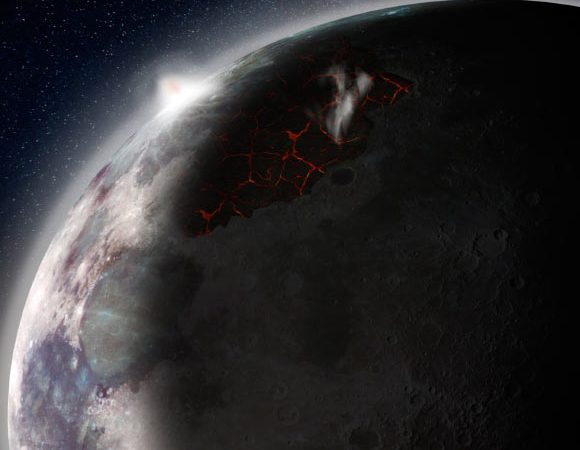There may have been two windows of habitability for the Moon, according to new research by University of London’s Professor Ian Crawford and Dr. Dirk Schulze-Makuch of Washington State University.
“Conditions on the lunar surface were sufficient to support simple lifeforms shortly after the Moon formed from a debris disk 4 billion years ago and again during a peak in lunar volcanic activity around 3.5 billion years ago,” the astrobiologists said.
During both periods, the Moon was spewing out large quantities of superheated volatile gases, including water vapor, from its interior.
“This outgassing could have formed pools of liquid water on the lunar surface and an atmosphere dense enough to keep it there for millions of years,” they explained.
“If liquid water and a significant atmosphere were present on the early Moon for long periods of time, we think the lunar surface would have been at least transiently habitable,” Dr. Schulze-Makuch said.
The team’s work, published in the journal Astrobiology, draws on results from recent space missions and sensitive analyses of lunar rock and soil samples that show the Moon is not as dry as previously thought.
In 2010, NASA’s radar aboard India’s Chandrayaan-1 spacecraft detected water ice deposits near the Moon’s north pole. The instrument found several dozens of small craters with ice. It’s estimated there could be at least 600 million tons of ice.
Additionally, there is strong evidence of a large amount of water in the lunar mantle that is thought to have been deposited very early on in the Moon’s formation.
The early Moon is also likely to have been protected by a magnetic field that could have shielded lifeforms on the surface from harmful solar wind.
“If liquid water and a significant atmosphere were present on the early Moon for millions of years, it can be assumed that the lunar surface was at least transiently habitable and probably also had an inventory of the building blocks required for life,” the scientists said.
“Whether life ever arose on the Moon, or was transported to it from elsewhere, is of course highly speculative and can only be addressed by an aggressive future program of lunar exploration.”
“An important aspect of such an exploration program would be obtaining samples from deposits dating from time of peak mare volcanism (3.5 billion years ago) to determine if hydrated conditions (or other evidence for habitable conditions, including possible biomarkers) existed at that time.”
Source: Sci News

































Leave a Comment
You must be logged in to post a comment.